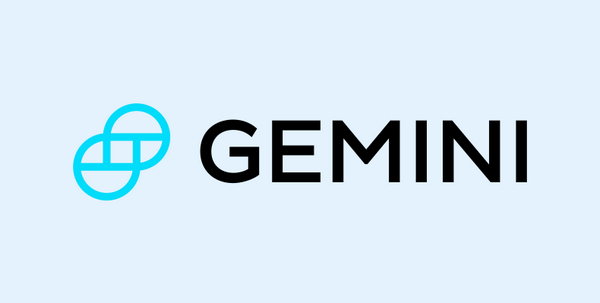-
 Bitcoin
Bitcoin $84,150.1656
0.11% -
 Ethereum
Ethereum $1,564.1601
-2.68% -
 Tether USDt
Tether USDt $0.9999
0.00% -
 XRP
XRP $2.0833
-1.96% -
 BNB
BNB $582.7072
-0.15% -
 Solana
Solana $130.3232
1.88% -
 USDC
USDC $0.9999
0.01% -
 TRON
TRON $0.2505
-0.07% -
 Dogecoin
Dogecoin $0.1536
-1.01% -
 Cardano
Cardano $0.6073
-1.91% -
 UNUS SED LEO
UNUS SED LEO $9.4081
0.54% -
 Chainlink
Chainlink $12.1626
-1.68% -
 Avalanche
Avalanche $18.7348
-3.21% -
 Stellar
Stellar $0.2349
-1.41% -
 Toncoin
Toncoin $2.8754
-2.36% -
 Shiba Inu
Shiba Inu $0.0...01165
-1.28% -
 Sui
Sui $2.0768
-2.13% -
 Hedera
Hedera $0.1564
-1.75% -
 Bitcoin Cash
Bitcoin Cash $318.9487
-1.64% -
 Litecoin
Litecoin $74.4611
-0.92% -
 Polkadot
Polkadot $3.5322
-1.67% -
 Dai
Dai $1.0000
0.00% -
 Hyperliquid
Hyperliquid $15.5601
2.40% -
 Bitget Token
Bitget Token $4.3063
0.37% -
 Ethena USDe
Ethena USDe $0.9993
0.02% -
 Pi
Pi $0.6022
-8.97% -
 Monero
Monero $217.5750
1.55% -
 Uniswap
Uniswap $5.0973
-2.48% -
 OKB
OKB $51.3150
0.39% -
 Pepe
Pepe $0.0...07109
1.50%
What does Gemini contract mean
With no expiration dates, Gemini contracts empower traders to speculate on the future price movements of cryptocurrencies through perpetual, cash-settled agreements.
Nov 07, 2024 at 08:02 pm

What Does Gemini Contract Mean: A Comprehensive Guide
In the rapidly evolving world of blockchain technology, Gemini, a leading cryptocurrency exchange, has emerged as a trusted platform offering a wide range of services, including contract trading. Gemini contracts, also known as perpetual contracts, are a type of financial instrument that allows traders to speculate on the future price movements of cryptocurrencies without taking physical ownership of the underlying assets. To provide a thorough understanding of Gemini contracts, this in-depth guide will explore various aspects of these instruments, including their mechanics, features, advantages, and potential risks.
1. Understanding the Mechanics of Gemini Contracts:
Gemini contracts are perpetual contracts, which means they have no fixed expiration date. They are settled in cash, with traders receiving or paying the difference between the opening and closing prices of the contract. Traders can either go long (betting that the price of the underlying asset will increase) or short (betting that the price will decrease). The profit or loss realized by a trader depends on the direction of the price movement and the leverage used.
2. Key Features of Gemini Contracts:
Gemini contracts offer several key features that cater to the needs of both experienced traders and newcomers to the cryptocurrency market:
a. Margin Trading: Gemini contracts allow traders to trade using leverage, which amplifies both potential profits and potential losses. Leverage enables traders to control a larger position with a smaller amount of capital. However, it is crucial to exercise caution and employ proper risk management strategies when using leverage.
b. Multiple Order Types: Gemini provides a range of order types, allowing traders to customize their trading strategies. These order types include market orders, limit orders, and stop-limit orders, empowering traders to execute trades at specific prices or within a desired range.
c. High Liquidity: Gemini contracts benefit from high liquidity, ensuring that traders can enter and exit positions efficiently and without significant price slippage. Liquid markets reduce the risk of getting stuck in a position due to a lack of buyers or sellers.
3. Advantages of Using Gemini Contracts:
There are several advantages associated with utilizing Gemini contracts:
a. Flexible Trading: Gemini contracts provide flexibility to traders, as they can hold positions for an indefinite period, allowing them to capitalize on long-term price trends or short-term market fluctuations.
b. Income Generation: Traders can potentially generate income through Gemini contracts by employing various strategies, such as scalping (taking small, frequent profits from short-term price movements) or range trading (trading within a defined price range).
c. Hedging: Gemini contracts can be used as a hedging tool to mitigate the risk of adverse price movements in spot markets. Traders can use contracts to offset potential losses on their underlying cryptocurrency positions.
4. Potential Risks Associated with Gemini Contracts:
While Gemini contracts offer numerous benefits, it is essential to be aware of the potential risks:
a. Leverage Risk: As mentioned earlier, using leverage magnifies both profits and losses. Traders must exercise caution and employ sound risk management practices to avoid excessive losses.
b. Price Volatility: Cryptocurrencies are subject to high price volatility, which can lead to significant fluctuations in the value of Gemini contracts. Traders must be prepared to withstand potential price swings and adjust their strategies accordingly.
c. Liquidation Risk: If the market moves against a trader's position and the account equity falls below a certain level, the exchange may liquidate the position to cover potential losses. Traders must monitor their positions closely to avoid liquidation.
Disclaimer:info@kdj.com
The information provided is not trading advice. kdj.com does not assume any responsibility for any investments made based on the information provided in this article. Cryptocurrencies are highly volatile and it is highly recommended that you invest with caution after thorough research!
If you believe that the content used on this website infringes your copyright, please contact us immediately (info@kdj.com) and we will delete it promptly.
- Russia Might Enter the Stablecoin Market After Wallets Connected to Russian Users and Holding USDT Were Frozen Last Month
- 2025-04-17 03:35:19
- XRP continues to act as an interest of traders with its price trapped in a falling wedge formation.
- 2025-04-17 03:35:19
- Ethereum Whales Dump $1.8B in ETH as Price Stalls
- 2025-04-17 03:30:15
- Dexsport, BetDEX, Bitsler, Coins.Game, and Chips.gg Are Revolutionizing the Online Gambling Landscape
- 2025-04-17 03:30:15
- title: Welcome to The Protocol, CoinDesk's weekly wrap-up of the most important stories in cryptocurrency tech development.
- 2025-04-17 03:30:13
- Bitcoin (BTC) Rally Stalled by Jerome Powell's Warning on Trump Tariffs
- 2025-04-17 03:30:13
Related knowledge

How does Tail Protection reduce the loss of liquidation?
Apr 11,2025 at 01:50am
Introduction to Tail Protection in CryptocurrencyTail Protection is a mechanism designed to mitigate the risks associated with liquidation in cryptocurrency trading. Liquidation occurs when a trader's position is forcibly closed by the exchange due to insufficient margin to cover potential losses. This often happens in leveraged trading, where traders b...

What are the consequences of an imbalance in the long-short ratio?
Apr 13,2025 at 02:50pm
The long-short ratio is a critical metric in the cryptocurrency trading world, reflecting the balance between bullish and bearish sentiments among traders. An imbalance in this ratio can have significant consequences on the market dynamics, affecting everything from price volatility to trading strategies. Understanding these consequences is essential fo...

How to judge the market trend by the position volume?
Apr 11,2025 at 02:29pm
Understanding how to judge the market trend by position volume is crucial for any cryptocurrency trader. Position volume, which refers to the total number of open positions in a particular cryptocurrency, can provide valuable insights into market sentiment and potential price movements. By analyzing this data, traders can make more informed decisions ab...

Why does a perpetual contract have no expiration date?
Apr 09,2025 at 08:43pm
Perpetual contracts, also known as perpetual futures or perpetual swaps, are a type of derivative product that has gained significant popularity in the cryptocurrency market. Unlike traditional futures contracts, which have a fixed expiration date, perpetual contracts do not expire. This unique feature raises the question: why does a perpetual contract ...

Why is the full-position mode riskier than the position-by-position mode?
Apr 13,2025 at 03:42pm
Why is the Full-Position Mode Riskier Than the Position-by-Position Mode? In the world of cryptocurrency trading, the choice between full-position mode and position-by-position mode can significantly impact the risk profile of a trader's portfolio. Understanding the differences between these two modes is crucial for making informed trading decisions. Th...

How is the liquidation price calculated?
Apr 12,2025 at 01:35am
Introduction to Liquidation PriceLiquidation price is a critical concept in the world of cryptocurrency trading, particularly when dealing with leveraged positions. Understanding how this price is calculated is essential for traders to manage their risk effectively. The liquidation price is the point at which a trader's position is forcibly closed by th...

How does Tail Protection reduce the loss of liquidation?
Apr 11,2025 at 01:50am
Introduction to Tail Protection in CryptocurrencyTail Protection is a mechanism designed to mitigate the risks associated with liquidation in cryptocurrency trading. Liquidation occurs when a trader's position is forcibly closed by the exchange due to insufficient margin to cover potential losses. This often happens in leveraged trading, where traders b...

What are the consequences of an imbalance in the long-short ratio?
Apr 13,2025 at 02:50pm
The long-short ratio is a critical metric in the cryptocurrency trading world, reflecting the balance between bullish and bearish sentiments among traders. An imbalance in this ratio can have significant consequences on the market dynamics, affecting everything from price volatility to trading strategies. Understanding these consequences is essential fo...

How to judge the market trend by the position volume?
Apr 11,2025 at 02:29pm
Understanding how to judge the market trend by position volume is crucial for any cryptocurrency trader. Position volume, which refers to the total number of open positions in a particular cryptocurrency, can provide valuable insights into market sentiment and potential price movements. By analyzing this data, traders can make more informed decisions ab...

Why does a perpetual contract have no expiration date?
Apr 09,2025 at 08:43pm
Perpetual contracts, also known as perpetual futures or perpetual swaps, are a type of derivative product that has gained significant popularity in the cryptocurrency market. Unlike traditional futures contracts, which have a fixed expiration date, perpetual contracts do not expire. This unique feature raises the question: why does a perpetual contract ...

Why is the full-position mode riskier than the position-by-position mode?
Apr 13,2025 at 03:42pm
Why is the Full-Position Mode Riskier Than the Position-by-Position Mode? In the world of cryptocurrency trading, the choice between full-position mode and position-by-position mode can significantly impact the risk profile of a trader's portfolio. Understanding the differences between these two modes is crucial for making informed trading decisions. Th...

How is the liquidation price calculated?
Apr 12,2025 at 01:35am
Introduction to Liquidation PriceLiquidation price is a critical concept in the world of cryptocurrency trading, particularly when dealing with leveraged positions. Understanding how this price is calculated is essential for traders to manage their risk effectively. The liquidation price is the point at which a trader's position is forcibly closed by th...
See all articles























































































